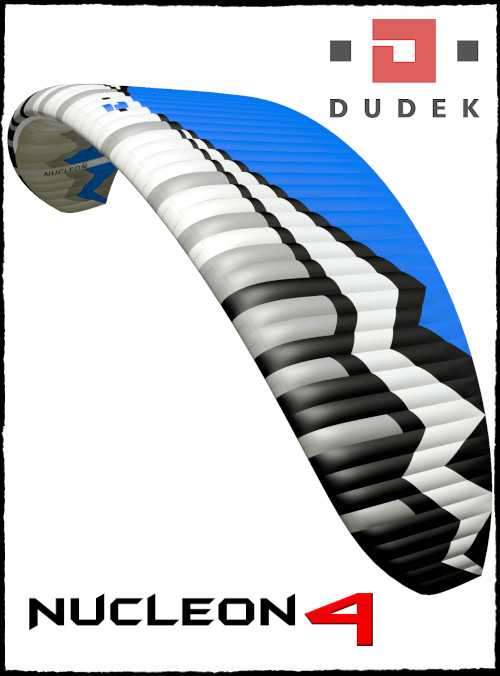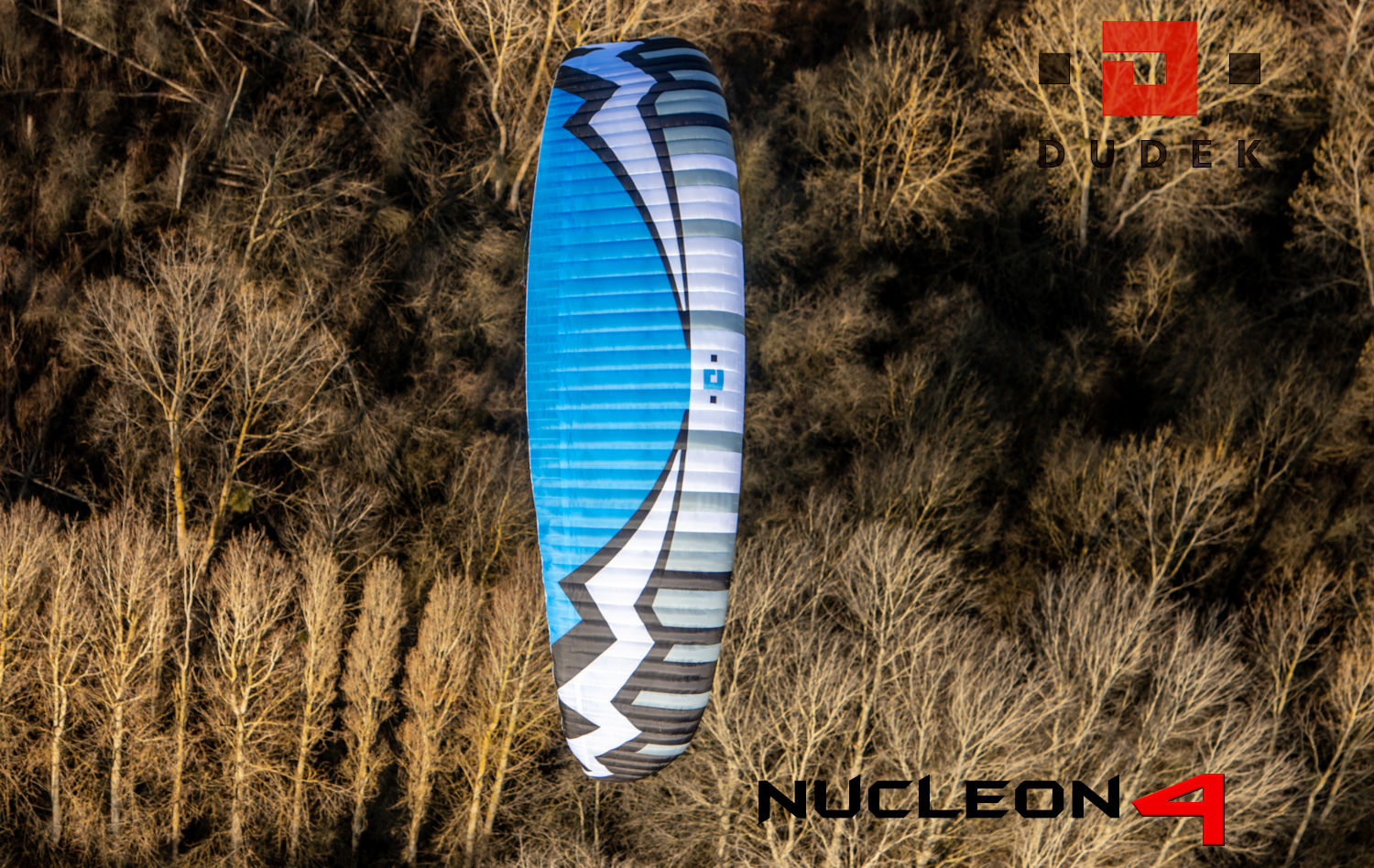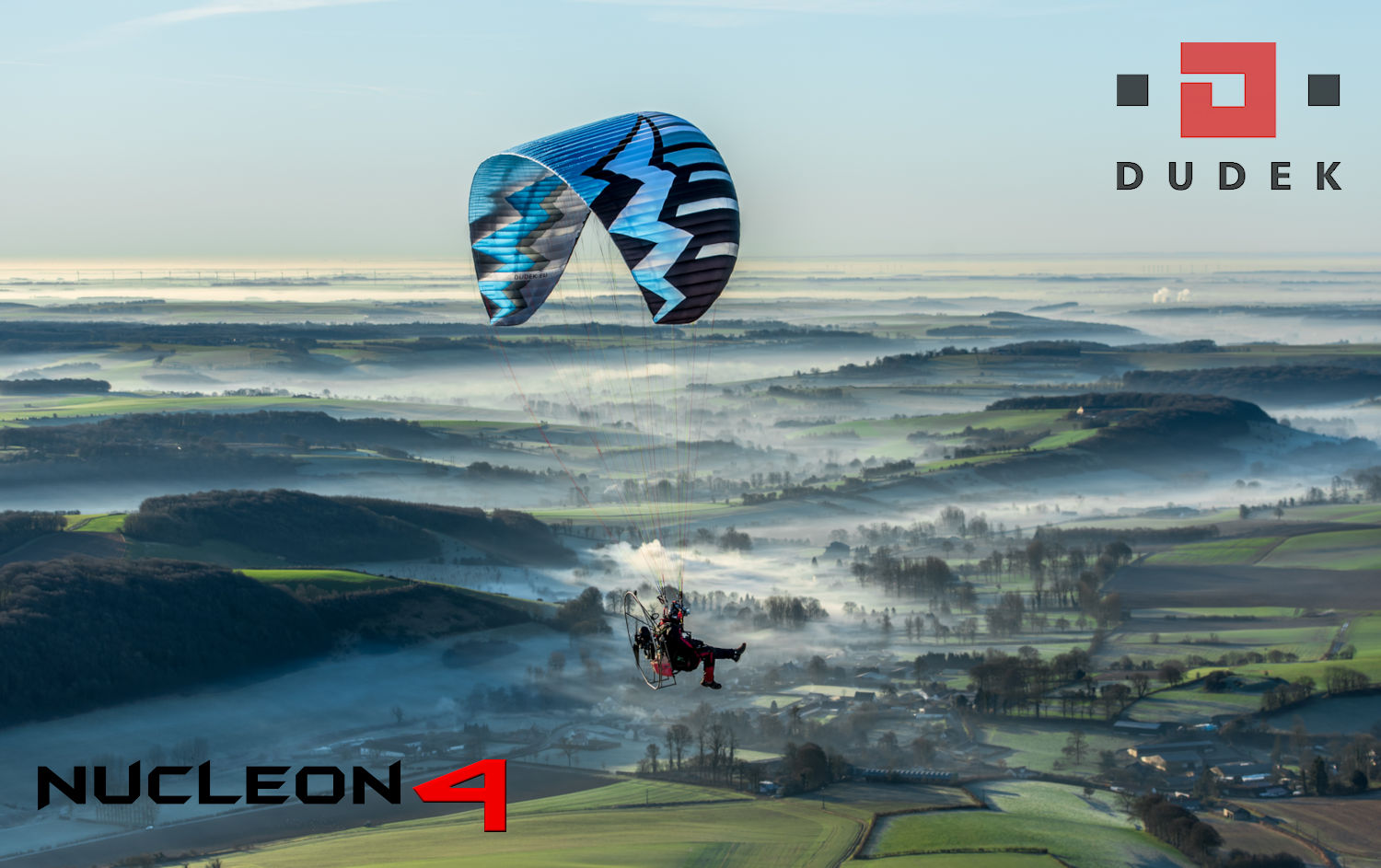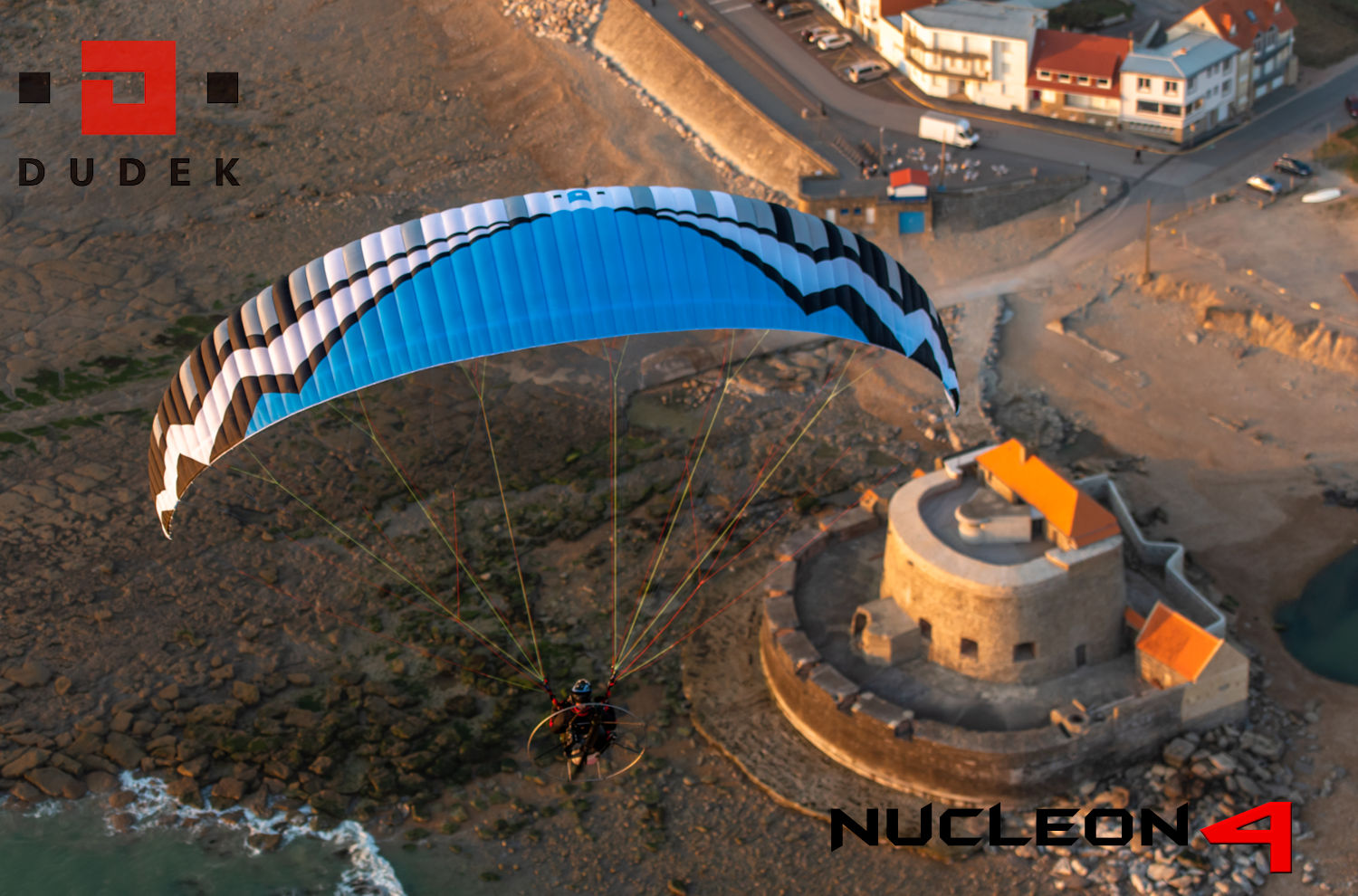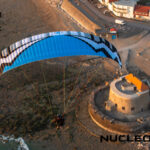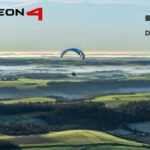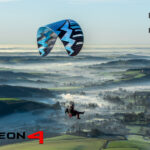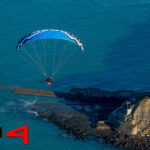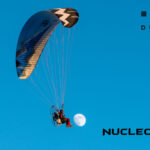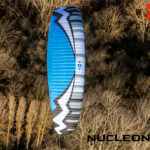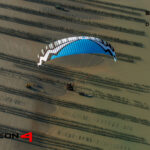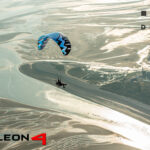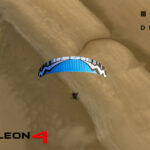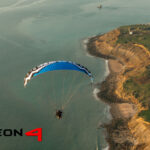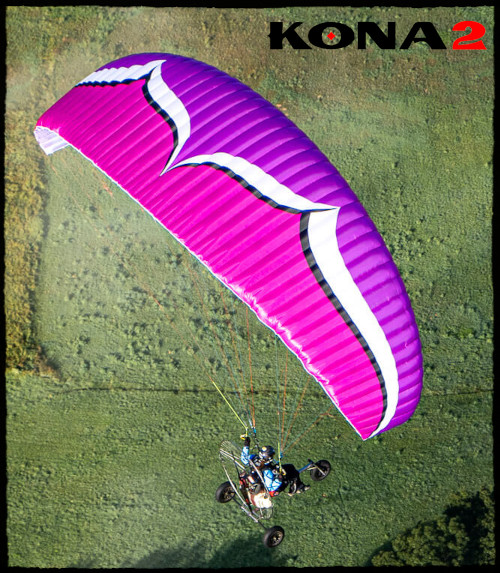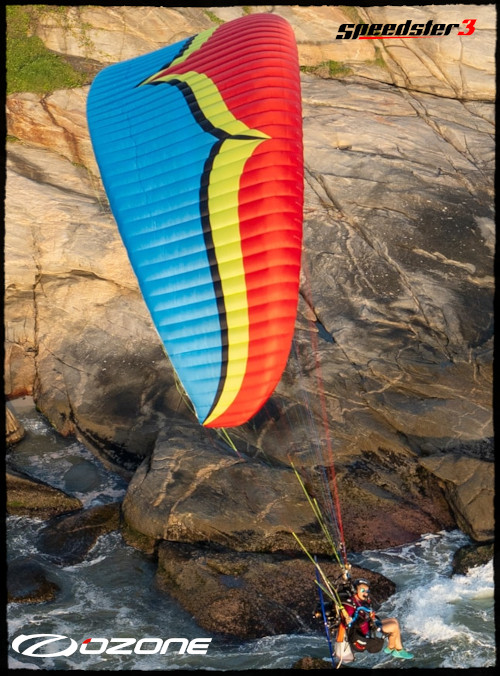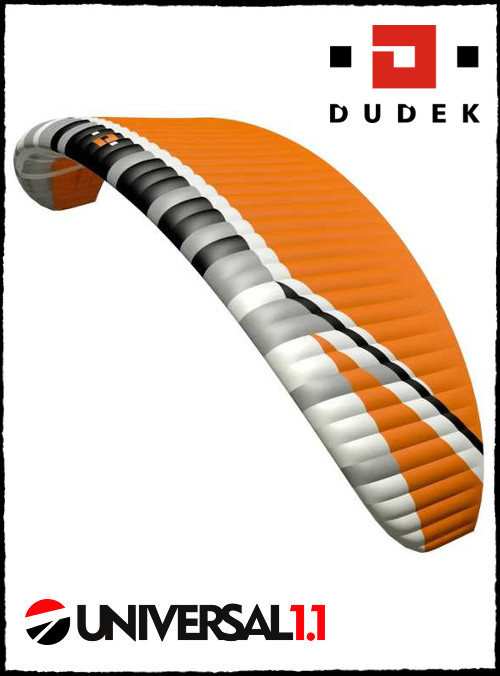The Dudek Hadron 3 is dedicated for the frequent and experienced flyers, who have perfectly mastered the reflex glider specifics.
Dudek Nucleon 4 Paraglider
$4,100.00
Want to Learn More About The Hadron 3?
Description
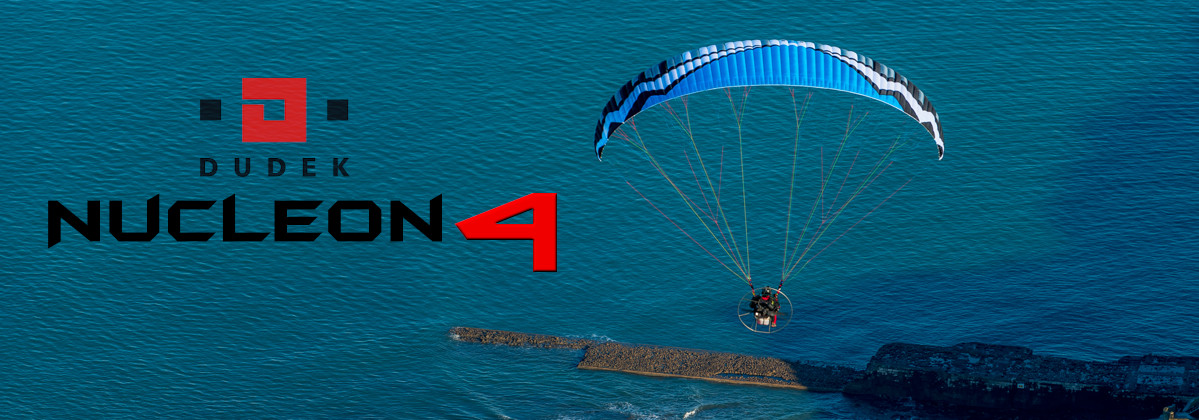
The NUCLEON 4 by Dudek Paragliders:
FROM THE MANUFACTURER:
Nucleon 4 derives directly from the first reflex constructions that appeared in the world – Traper, Action, then ReAction. This pedigree was continued in several incarnations of the Nucleon, up to the current – fourth generation.
We focused in particular on combining the Nucleon WRC’s lateral stability with the agility and pleasant handling of the Nucleon XX. We also added the uncompromising stability of Reportair. Moreover, we managed to increase speed, load capacity, and make the Nucleon 4 lighter than all its predecessors.
Nucleon 4 was designed for intermediate pilots who have already solidly mastered the art of reflex wing flying and are familiar with their specific features. One of them is unique resistance to turbulence, and the only requirement for this legendary reflex safety is to ‘speed up’, meaning the release of trimmers and brakes with an optional pressing the speedbar, which can be used in any trimmer configuration.
A very easy launch, comfortable steering and a pleasant flare at landing are standard in our designs, but in the Nucleon 4 it has been even increased. We improved the flight economy as well.
The spectrum of operation is wide, from recreational and cross-country flying to classic paramotor competitions.”
In the Nucleon 4 we used a new aerodynamic profile. The structure includes Flexi Edge (FET) technology, which ensures better aerodynamics and stiffness of the leading edge. Additionally, we use double reinforcements (LE2R) between the cells. Stiffening cores and other reinforcements together with the specific shape of the leading edge (shark nose) make sure that high pressure inside the wing is maintained over the full speed range.
Improved risers mechanisms make them intuitive to use, allow you to use the speed system in the entire range of trimmers, comfortably correct the flight direction with the 2D / TST system and compensate the spinning effect with the automatic TEA system.
Properly selected progression of the alternative 2D control system allows you to steer the wing reliably and effortlessly, which is especially important at higher flight speeds.
Nucleon 4 does not have a Power Attack system, nor is it possible to mount it.
Design solutions, technologies and other functionalities are listed below in the Technologies section.
INCLUDES:
- MotoBag XX (backpack for tight canopy packing, without harness)
- DewBag (quickpack)
- Transport bag including compression strap.
- speedbar Easy Catch
- pouch with documents and repair kit (self-adhesive cloth, spare line)
- wind ribbon and windsock
- small gifts
SPECS (from Dudek’s website):
| Size | 18 | 20 | 22 | 24 | 26 | 28 |
| Approval – ULM identification | ||||||
| Number of cells | 60 | |||||
| Surface area (flat) [m2] | 18.00 | 20.00 | 22.00 | 24.00 | 26.00 | 28.00 |
| Surface area (projected) [m2] | 15.29 | 16.99 | 18.68 | 20.38 | 22.08 | 23.78 |
| Span (flat) [m] | 10.04 | 10.58 | 11.10 | 11.59 | 12.07 | 12.52 |
| Span (projected) [m] | 7.93 | 8.36 | 8.77 | 9.15 | 9.53 | 9.89 |
| Aspect Ratio (flat) | 5,60 | |||||
| Aspect Ratio (projected) | 4,11 | |||||
| Speed* [km/h] | min = 28 ; trim = 42-53 ; max = 67 (+/- 3 km/h)* | |||||
| Longest chord [mm] | 2210 | 2330 | 2443 | 2552 | 2656 | 2756 |
| Schortest chord [mm] | 525 | 581 | 610 | 637 | 663 | 688 |
| Distance pilot to wing [m] | 6.02 | 6.35 | 6.66 | 6.96 | 7.24 | 7.52 |
| Total line lenght [m] | 272.90 | 288.30 | 302.95 | 316.95 | 330.37 | 343.29 |
| Total take-off weight** [kg] | 70-100** | 80-110** | 90-120** | 100-130** | 105-140** | 115-150** |
| Max take-off weight – for experienced [kg]*** | 110*** | 125*** | 135*** | 150*** | 160*** | 175*** |
| Distance betwen risers [cm] | 45 | 45 | 45 | 45 | 45 | 45 |
| Weight [kg] | 4.82 | 5.13 | 5.51 | 5.82 | 6.24 | 6.63 |
| Lines | Edelrid A-8000U: 050; 090 / Technora: 90; 140; 190; 280; 340 / Dyneema: 350 | |||||
| Fabric [g/m2] | Porcher Classic 38 g/m2, Dominico tex 34 g/m2, Porcher Hard 40 g/m2, SR Scrim, SR Laminate 180 g/m2 | |||||
* Speeds are given as estimated for the middle wing size and the middle of its weight range. These speeds can vary within +/- 3 km / h depending on the size, take-off weight and additional factors such as air pressure and temperature.
** The basic rule is to choose the size of the wing so that the take-off weight is in the middle of the weight range. Less weight on the wing (lower range take-off weight) can be considered for foot take-off, when flying in calmer conditions, or when we want to improve economy. More experienced pilots who want to fly dynamically, have higher speed and fly in more demanding wind conditions can consider greater wing loading (take-off weight in the upper range). This is a common option among trike users.
*** Note – the canopy significantly changes its behavior with increasing wing loading. The greater the loads, the greater skill and concentration of the pilot are required.
COLOR OPTIONS:
(Click Images to Enlarge)

NEED HELP DECIDING THE CORRECT SIZE GLIDER?
CONTACT US: (833) PPG-FLYR

